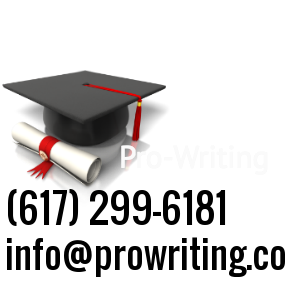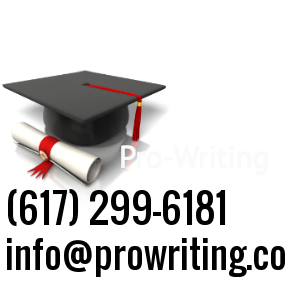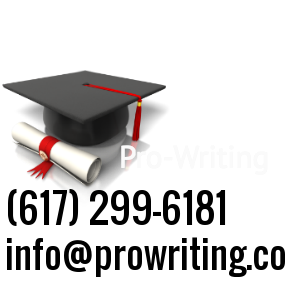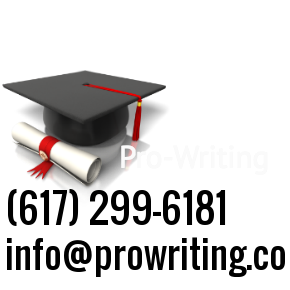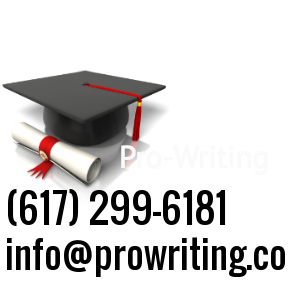Description
RES724 Week 4: For the remaining weeks in this course, you will demonstrate your understanding of qualitative research by engaging in specific processes associated with the design and development of a mock qualitative study on a topic of your choice.
This week, you will begin formulating a mock qualitative study.
Complete the Mock Study Development Worksheet.
Note: Please pay close attention to the entire worksheet. This worksheet has many elements to it. For the observations, please make sure this is a non-participant observation. You cannot observe just an individual, it needs to a group of people like a board meeting, faculty meeting, train station, mall, Starbucks, etc. The observation should be related to your proposed topic, but sometimes that may not be possible. For the interviews, the two interviews need to be the same…such as two faculty, two managers, two employees. Please contact your faculty for further information. Patients or underage children cannot be interviewed.
Mock Study Development Worksheet
Part I: Research Topic and Problem
Identify a research topic related to your degree program that would be best approached from a qualitative perspective.
Click or tap here to enter text.
Identify a research problem related to your research topic.
Click or tap here to enter text.
Explain why your selected topic and problem would be best approached from a qualitative perspective.
Click or tap here to enter text.
Explain how your selected topic and problem relate to your degree program.
Click or tap here to enter text.
Provide a brief summary about what you currently know about your selected topic and problem and why they interest you.
Click or tap here to enter text.
Part II: Exploration
Locate a minimum of three peer-reviewed, empirical journal articles (published within the last five years) that relate to your selected research topic and/or problem. Analyze each article using the criteria outlined in the table below and report your findings within the table.
Click to enter text.
Ex: Smith & Jones (2011)
Click to enter text.
Ex: Smith & Jones (2011)
Click to enter text.
Ex: Smith & Jones (2011)
APA citation
Research problem
Research question(s)
Research design
Sample size and selection
Type of data collected
Data collection procedure(s)
Data analysis procedure(s)
Findings/Conclusions
How does this article substantiate your research topic or problem?
Part III: Formulating a Research Question and Design
Propose a research question for a mock study related to your topic and problem that is appropriate for each research purpose listed in the table below. Explain how your research questions align with and/or support the research purpose.
Research Question(s) Explanation
Exploratory
Descriptive
Explanatory
Consider your research topic and problem in relation to the research questions you proposed and the literature you reviewed in Part II. Provide a response to the question: “What do I want to know about this topic and problem”?
Click or tap here to enter text.
In later weeks, you will be required to gather data from interviews and observations to inform your mock study. Qualitative research traditionally employs a single data collection method; however, you are expected to use two methods (i.e., interviews and observations), which will require you to formulate a separate research question and design that can be supported using each data collection method. The purpose of this is to demonstrate your ability to engage in the practice of qualitative research on a specific topic/problem, using multiple approaches. As consumers and producers of research, you must possess a general understanding of the various research approaches and procedures.
Propose a research question and design for a mock study that will collect data using interviews to help you discover the knowledge you seek. Explain why your research question and design are appropriate for your study.
Click or tap here to enter text.
Propose a research question and design for a mock study that will collect data using observations to help you discover the knowledge you seek. Explain why your research question and design are appropriate for your study.
Click or tap here to enter text.
Explain how your mock study will contribute new knowledge to your discipline (i.e., what is the current gap? and how will your research help to fill that gap?).
Click or tap here to enter text.
Part IV: Planning
Begin planning your qualitative mock study by explaining your approach for each item outlined in the table below. Be sure to explain how your approach will change based on the data collection method used.
Approach and Rationale
Population, Sample Size, and Selection
Consider data saturation and factors that impact saturation. Some designs require a larger sample and others could have a sample size of just one.
Type of Data to Collect
Examples include perceptions of people regarding a phenomenon, narrative stories of people’s experiences, artifacts, and written material.
How Data Will Be Collected
Examples include interviews, focus groups, and written accounts.
How Data Will Be Analyzed
Examples include words, themes, content, and use of software programs.
How Results Will Be Presented
Examples include use of participant’s words, percentage and number of participants who expressed a theme, and major themes or outliers.
Ethical Considerations
Examples include confidentiality, deception, disclosure, and moral integrity.
In the space below, develop an interview guide that includes a series of questions related to your mock study and within your area of expertise. Your interview guide must include an introductory statement about the purpose of the interview and 10 to 12 questions to facilitate data-gathering and inform your mock study. Refer to the sample questions below as you develop your interview guide.
How would you describe…?
At what point do you remember learning about…?
You just mentioned something about… Can you tell me more about that?
In your experience, how much…?
What are some different way in which you approach…?
In the time that you have…, how has this affected your…?
What do you imagine your life would be like after…?
Is there anything you wished you had known before…?
Is there anything else you would like to tell me?
Introductory Statement
Click or tap here to enter text.
Interview Questions
Click or tap here to enter text.
In Week 6, you will conduct two observations of the actions, events, interactions, or relevant factors related to the central phenomenon in your mock study. Discuss your observation plan for each setting by responding to the prompts below.
Observation 1
Describe the observation setting. Example: I will be observing a 10th grade Algebra class at Superior High School.
Click or tap here to enter text.
Who will you contact to obtain permission to conduct your observation?
Click or tap here to enter text.
When will you conduct this observation (i.e., date and time)?
Click or tap here to enter text.
What factors (if any) could interfere with your ability to complete this observation? Why? What steps can you take to mitigate these factors?
Click or tap here to enter text.
What questions or concerns do you have about conducting your observation?
Click or tap here to enter text.
Observation 2
Describe the observation setting. Example: I will be observing a 10th grade Algebra class at Superior High School.
Click or tap here to enter text.
Who will you contact to obtain permission to conduct your observation?
Click or tap here to enter text.
When will you conduct this observation (i.e., date and time)?
Click or tap here to enter text.
What factors (if any) could interfere with your ability to complete this observation? Why? What steps can you take to mitigate these factors?
Click or tap here to enter text.
What questions or concerns do you have about conducting your observation?
Click or tap here to enter text.


